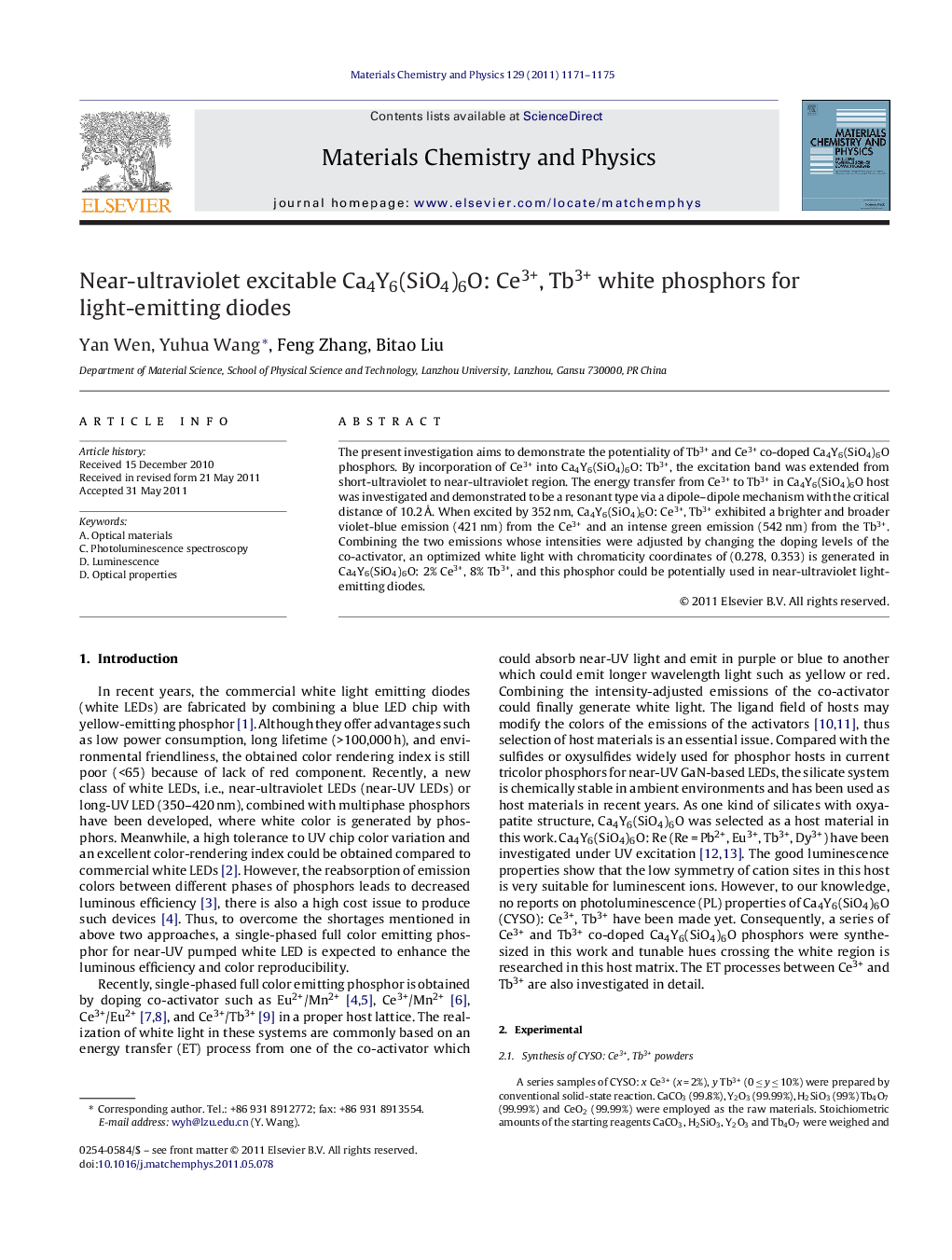| Article ID | Journal | Published Year | Pages | File Type |
|---|---|---|---|---|
| 1524666 | Materials Chemistry and Physics | 2011 | 5 Pages |
The present investigation aims to demonstrate the potentiality of Tb3+ and Ce3+ co-doped Ca4Y6(SiO4)6O phosphors. By incorporation of Ce3+ into Ca4Y6(SiO4)6O: Tb3+, the excitation band was extended from short-ultraviolet to near-ultraviolet region. The energy transfer from Ce3+ to Tb3+ in Ca4Y6(SiO4)6O host was investigated and demonstrated to be a resonant type via a dipole–dipole mechanism with the critical distance of 10.2 Å. When excited by 352 nm, Ca4Y6(SiO4)6O: Ce3+, Tb3+ exhibited a brighter and broader violet-blue emission (421 nm) from the Ce3+ and an intense green emission (542 nm) from the Tb3+. Combining the two emissions whose intensities were adjusted by changing the doping levels of the co-activator, an optimized white light with chromaticity coordinates of (0.278, 0.353) is generated in Ca4Y6(SiO4)6O: 2% Ce3+, 8% Tb3+, and this phosphor could be potentially used in near-ultraviolet light-emitting diodes.
► Ca4Y6(SiO4)6O: Ce3+, Tb3+ shows good luminescence properties under UV excitation. ► Efficient energy transfer from Ce3+ to Tb3+ in this phosphor is observed obviously. ► The mechanism of energy transfer is demonstrated to be a resonant dipole–dipole interaction. ► Ca4Y6(SiO4)6O: 2%Ce3+, 8%Tb3+ exhibits excellent white emission under 352 nm excitation. ► This kind of phosphor can be potentially used in near-UV pumped LEDs.
